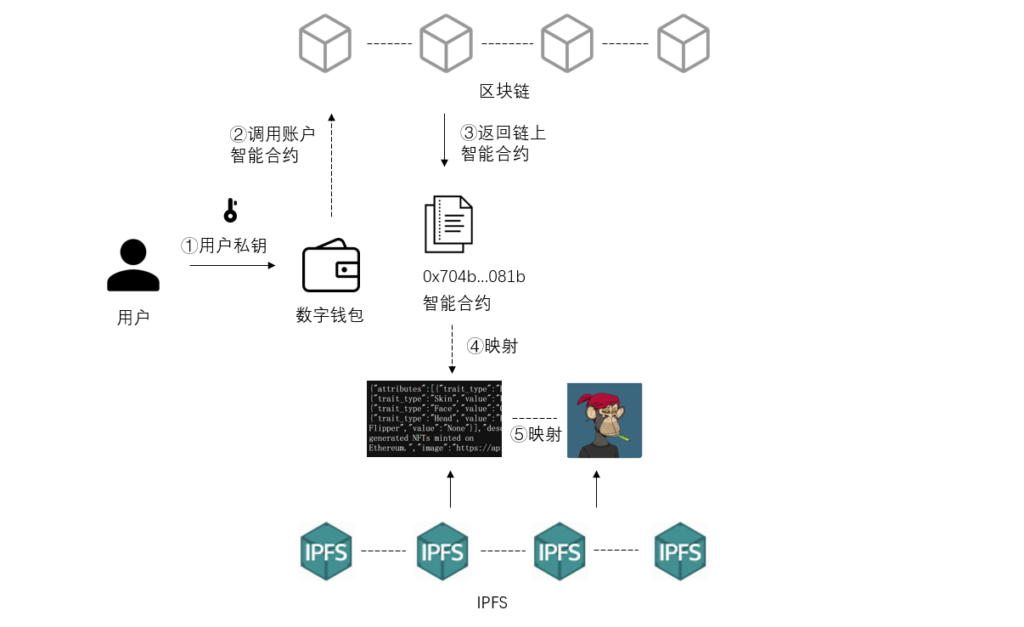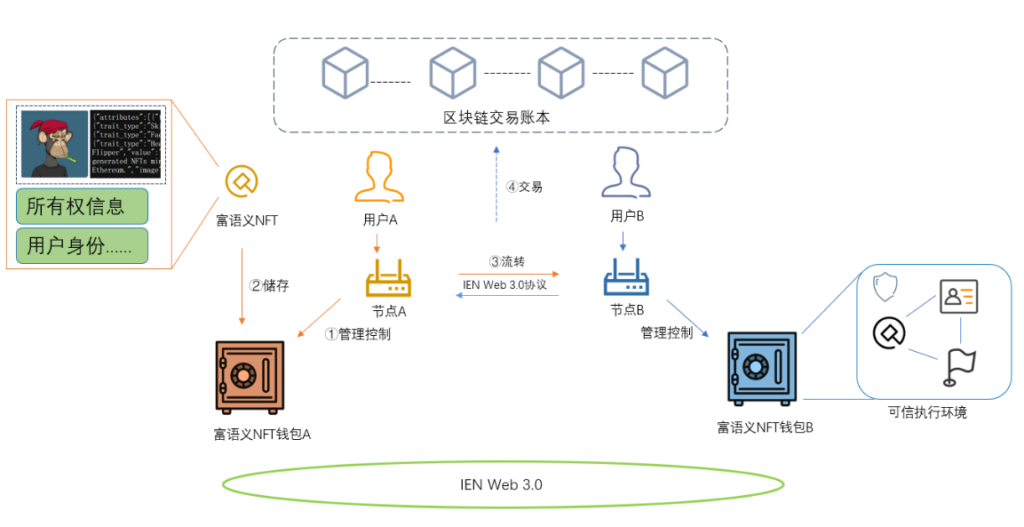The Internet Web3.0, as the next generation of the Internet, is gradually emerging. In Web 3.0, users are no longer confined to centralized servers and aim to continually enhance their control over personal/corporate data and data assets, with the goal of achieving user creation, ownership, and control of data elements. Data will serve as users’ assets and become the primary element in the Web 3.0 world. In our country, data has been explicitly paralleled with land, labor, capital, and technology as key production factors and is gradually legislated upon. A crucial step in making data elements into data assets is data rights confirmation. Data rights confirmation is a prerequisite for data circulation. It establishes ownership and control over data, forming the basis for data protection and utilization, helping to increase the certainty of data transactions and boosting confidence among all parties involved in transactions, thus promoting the activity in the data market and the development of data production.
Background and Challenges: Issues facing the current development of NFT
With the development of blockchain technology, Non-Fungible Tokens (NFTs), which are essentially digital asset certificates recorded on the blockchain, have become one of the mainstream means for data rights confirmation. However, the inherent risks in this model are becoming increasingly apparent.
1. From a technical perspective, current NFTs are limited to a single blockchain system. NFTs exist as data rights certificates on the blockchain, while the actual data exists off-chain, creating a mapping relationship between data and certificates. This results in the binding of NFTs to specific blockchains, hindering their widespread liquidity and openness, and failing to ensure the security and reliability of assets. Furthermore, when minting NFTs, users need to pay gas fees upfront, incurring fees before earning, a production method that contradicts the idea that infrastructure, according to Alibaba’s academician Wang Jian, should be inclusive and affordable.
2. From a financial perspective, the rampant speculation and disorderly development before NFTs have led to a financialization trend with hidden risks of overpriced assets and potential crises. Speculative trading easily becomes a tool for illegal activities. The crises are closely tied to cryptocurrency transactions. How to restore the normal market value of digital works and unleash the inherent value of data assets is a crucial safeguard against potential risks.
3. From a legal standpoint, Article 240 of the Civil Code stipulates that owners have the right to possess, use, enjoy, and dispose of their real estate or chattels. While NFTs do grant holders exclusive property rights, this exclusivity doesn’t automatically extend to the digital assets mapped by NFTs. As Tesla’s CEO Musk questioned, NFTs might not even exist on the blockchain; they are merely pointers to JPEG URLs (or essentially, old-style pawn tickets, with the risk of valuable assets entirely reliant on the pawnshop’s reliability, which is highly questionable in the digital era).
Strengthening data asset rights confirmation, starting from the data itself, to make it more practical, valuable, versatile, and in line with the form of the digital economic market, becomes pivotal in the development of Web 3.0.

Figure 1: Relationship diagram between digital wallet and NFT
Semantic-Rich NFT: Constructing a new model for open, fluid, multi-level data element transactions
Semantic-Rich NFT is a form of data organization that integrates ownership information of specific digital assets with the content of data element assets. Its concept is derived from the Named Data Networking (NDN) future network architecture and is designed for corresponding improvements. Peking University’s Shenzhen Graduate School, the “Shenzhen Content-Centric Networking and Blockchain Key Laboratory (ICNLAB),” has redefined the concept of traditional blockchain NFTs, proposing encapsulated NFTs, enhancing the effective information carrying capability of NFTs. Combined with Information-Centric Networking (ICN), based on the “Intelligent Eco Networking” Internet 3.0 architecture, a new type of data asset representation and circulation protocol patent was authorized in 2022, titled “Method for generating and parsing unbound non-fungible tokens CN114065269B.”
From encapsulated NFTs to semantic-rich NFTs, the aim is to overcome the limitations commonly found in traditional NFTs, enabling more open circulation and popularization of digital assets. It establishes an open, portable, unbound, multi-party, and multi-level data element application market that does not rely on specific blockchain systems or supports underlying circulation in multiple blockchain systems.
Semantic-Rich NFT maintains the unique value attribute of digital assets and possesses the capability to support rich semantic information. For instance, it can contain user identities, content, and data. This feature enables it to integrate various services, functions, and computations in the future era of the Trust Verse, forming a unified entity in the digital space. Semantic-Rich NFTs can transform ubiquitous valuable data elements and digital assets into highly integrated entities filled with semantic information, allowing flexible expansion of more characteristic information. This innovation not only enriches the essence of data assets but also lays the technical architectural foundation prototype for the AIGC digital civilization in the Web 3.0 internet era, premised on ownership.
Semantic-Rich NFT Wallet: The “safe” for managing and protecting data assets
With this new type of Semantic-Rich NFT, there’s a natural need to design an ownership-rich Semantic NFT wallet to protect users’ data assets (storage and management). Positioned as a fundamental component in the IEN Web 3.0 internet architecture, the Semantic-Rich NFT wallet is intended to be a trusted, secure data asset manager, providing users with a storage environment that ensures data security and privacy protection. It aims to promote the development and prosperity of the Web 3.0 data economy and encourage more data transactions and utilization.
The functions of the Semantic-Rich NFT wallet include:
1. Semantic-Rich NFT Management and Storage: Supports the storage and management of Semantic-Rich NFTs, including metadata, content, and user identity. It facilitates the indexing, classification, and rapid retrieval of Semantic-Rich NFT assets for convenient asset management and retrieval by users.
2. Security Assurance: Provides a secure storage environment to ensure the security of Semantic-Rich NFTs and related data, utilizing trusted computing technology to guarantee the privacy and security of user data.
3. Permission Control and Ownership: Offers permission control for Semantic-Rich NFTs, ensuring that only authorized users can access, manage, and transact specific Semantic-Rich NFT assets. In the future development of digital assets, the Semantic-Rich NFT wallet can become an integral part of building the infrastructure for future data assets, setting standards and templates for trusted storage of digital assets.

Figure 2: Relationship diagram between Semantic-Rich NFT and its wallet
The inherent difference between Semantic-Rich NFT wallets and cryptocurrency wallets
Cryptocurrency wallets, despite their name, do not store actual digital assets but are more akin to receipts/notes. They query user assets via smart contracts on the blockchain. Conversely, Semantic-Rich NFT wallets not only store the data content, metadata, and related information of Semantic-Rich NFTs but may also contain semantic information associated with Semantic-Rich
NFTs, such as identity, content, and other data. The goal of this Semantic-Rich wallet is to provide a comprehensive storage platform that allows users to manage and interact with rich semantic NFTs and related information. By integrating the storage of Semantic-Rich NFTs and related data, it resembles more of a “data asset safe,” which distinguishes it from the decentralized storage of IPFS. While IPFS holds certain advantages in data storage, for specific needs, especially those involving Semantic-Rich NFTs and associated data, using Semantic-Rich NFT wallets instead of IPFS offers more advantages. Firstly, data management and organization: Semantic-Rich NFT wallets can integrate NFTs and their associated rich semantic data elements, providing users with more functionalities, such as tagging, metadata handling, semantic parsing, and permission management. This type of wallet is more flexible and controllable in managing and processing specific types of data compared to IPFS. Secondly, security and permission control: Semantic-Rich NFT wallets possess stronger security and permission control. For sensitive data, personal identity information, or specific NFT assets, targeted security control and access permission management might be more crucial. Combined with trusted computing for robust privacy protection, Semantic-Rich NFT wallets offer more related features to ensure data security.
In summary, by integrating NDN and trusted computing technology, the Ownership-Rich Semantic NFT wallet will become an essential tool for providing users with secure, privacy-protected data asset management, and is expected to facilitate the effective circulation and management of data assets in the Web 3.0 era.”
Article Copyright @ Shenzhen Content Center Network and Blockchain Key Laboratory (ICNLab)
